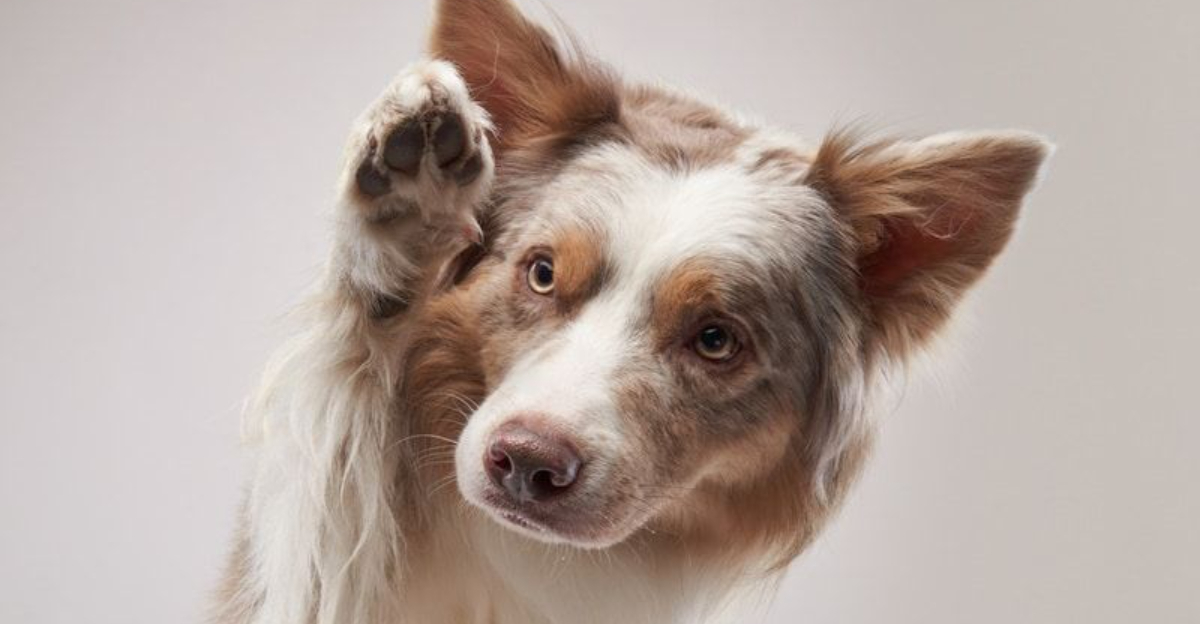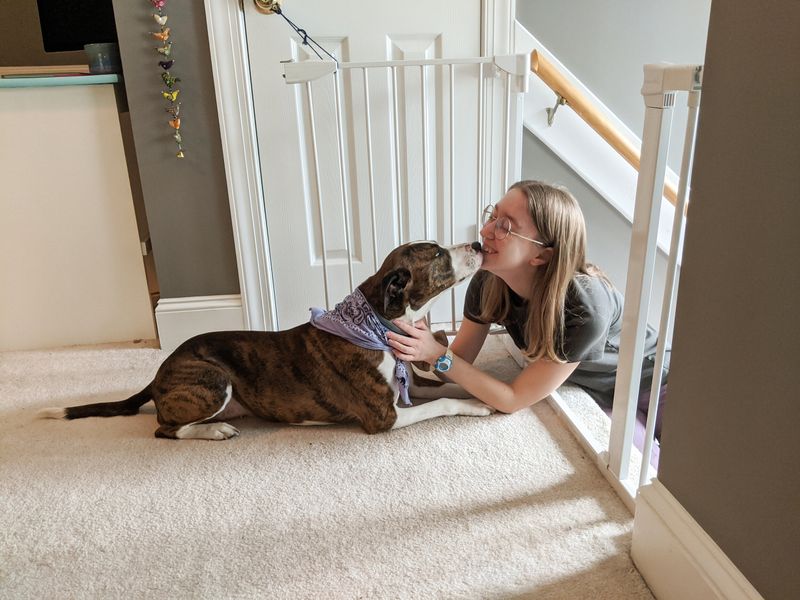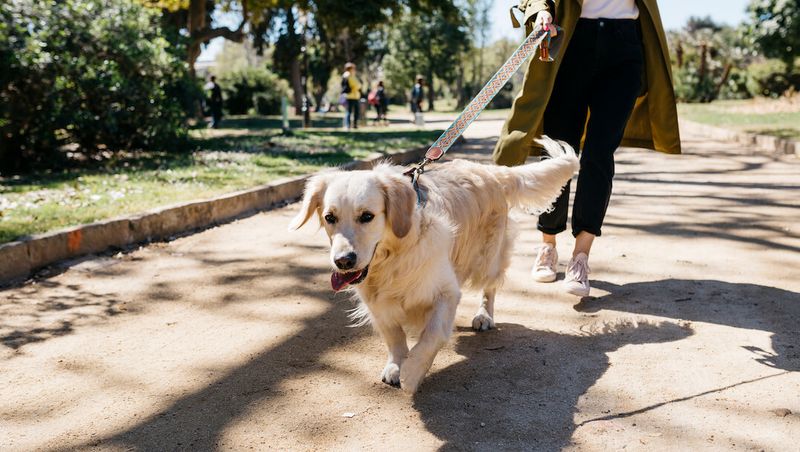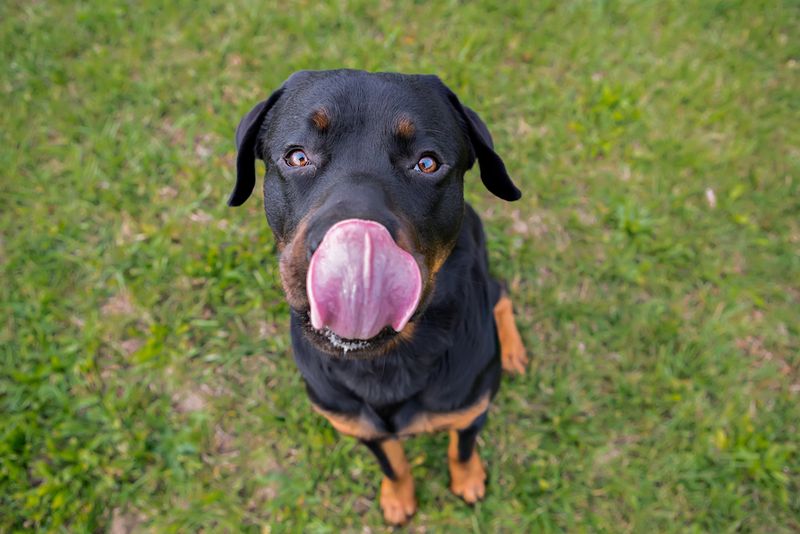Discovering that your beloved furry friend might be ignoring you can be both puzzling and disheartening. Understanding these behaviors and knowing how to respond can strengthen your bond and improve communication. Here are 11 behaviors that might indicate your dog is ignoring you, along with what you can do to regain their attention.
Turning Away
When your dog turns away, it might not just be looking at something more interesting. This behavior can signal disinterest or even discomfort.
Try to identify any changes in environment or routine that could be affecting your dog. Sometimes, they’re just trying to cope with stress or overstimulation.
Engage with them through gentle coaxing and positive reinforcement. A calm voice and a favorite treat can help rekindle their attentiveness without overwhelming them. A small change in your approach can yield significant results.
Ignoring Commands
Ignoring commands doesn’t always mean that your dog is being stubborn. Often, they might not understand the command, or they could be distracted.
Evaluate the clarity of your instructions and the environment. Are there too many distractions around them?
Consistent training in a distraction-free area can make a difference. Use clear, concise commands and reward them for compliance. This approach reinforces learning and strengthens your connection.
Yawning Excessively
Yawning isn’t always a sign of fatigue in dogs. It can often indicate stress or confusion.
If you notice your dog yawning frequently, consider whether they’re feeling anxious or overwhelmed. It’s a subtle cue that they’re trying to calm themselves.
Offering a comforting environment and being patient can help in these situations. Watch for other signs of stress, and provide reassurance through gentle strokes and soothing words.
Walking Away
A dog walking away might seem like defiance, but it often reflects discomfort or a need to explore.
Try to understand what might be causing them to retreat. Is there something in their environment that’s unappealing or alarming?
Engage them with interactive play or take them for a walk to channel their energy positively. Encouraging curiosity in a controlled manner can help maintain their interest in you and their surroundings.
Ears Back
Ears pinned back often means your dog is anxious or unsure. It’s a common way they express discomfort.
Notice the context in which this behavior occurs. Are there loud noises or unfamiliar faces around?
Providing a calm and familiar environment can alleviate their unease. Gently communicating with them through touch and voice can reassure them and help them feel secure.
Lack of Eye Contact
Lack of eye contact can signal submission or insecurity. Dogs use their eyes to communicate, and avoidance might mean they’re apprehensive.
Consider any recent changes that might be unsettling them. Offering them a safe space can encourage more relaxed interactions.
Building trust through consistent, positive experiences will gradually improve their comfort in meeting your gaze. Celebrate small victories with praise and affection.
Sniffing Around
Sniffing around might seem like a simple distraction, but it’s often a sign your dog is trying to avoid interaction.
This behavior can be a coping mechanism for feeling overwhelmed or uncertain. Allow them some space to explore.
Redirect their focus with engaging games or training exercises. This can transform the situation into a learning opportunity, capturing their attention in a fun and productive way.
Licking Lips
Licking lips in dogs often indicates stress or discomfort. It’s a subtle gesture that can easily go unnoticed.
Pay attention to what might be causing this anxiety. Are they in an unfamiliar setting or around strangers?
Reassuring them with calm, supportive interactions can ease their tension. Recognizing and responding to these small cues helps in building a responsive and trusting relationship.
Hiding or Retreating
Hiding or retreating is a clear sign your dog is uncomfortable or scared. They seek refuge to feel safe.
Identify triggers that might be causing this behavior, such as loud noises or new visitors.
Creating a safe haven, like a quiet corner or a cozy crate, can provide comfort. Gradual exposure to the stressor, paired with positive reinforcement, can help them feel more confident.
Barking or Whining
Barking or whining can be a plea for attention or an expression of distress. It’s their way of communicating needs.
Consider what they might be trying to tell you. Are they hungry, bored, or anxious?
Responding promptly and addressing the root cause can alleviate their concerns. Consistent routines and engaging activities can reduce the need for vocalizations, fostering contentment and understanding.
Paw Lifting
Paw lifting is sometimes mistaken for a cute trick, but it can indicate uncertainty or discomfort.
Observe the situation to understand why your dog is exhibiting this behavior. Are they unsure about a new person or object?
Encouraging positive interactions and providing reassurance through touch and voice can help them feel more secure. This gesture often invites closer connection and understanding.











